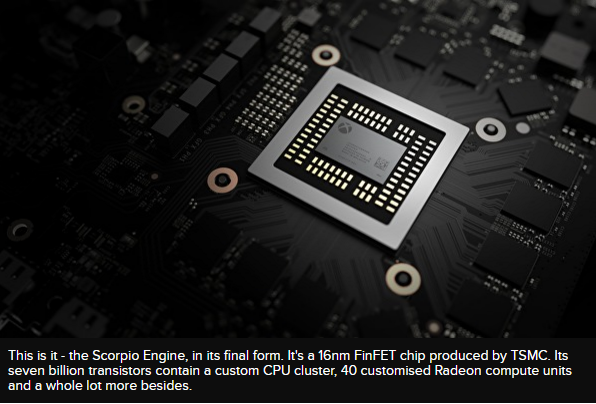- Joined
- Aug 20, 2006
- Messages
- 13,000
And the hits keep coming for Microsoft’s 4K Xbox. It turns out that EuroGamer “held back” (man, they are really going to stretch this exclusive out, aren’t they) one pleasant detail about Project Scoprio: you will probably experience a lot less tearing and stutter, as the console supports AMD’s FreeSync. The system will even flaunt the latest HDMI (2.1) spec. Thanks to cageymaru for this one.
Adaptive refresh technology like AMD's FreeSync completely eliminates tearing and reduces stutter significantly by allowing the GPU to trigger the display refresh instead of adhering to a hard and fast 60Hz cycle. Essentially, the screen produces the next image immediately after the GPU finishes rendering it. The technology was pioneered by Nvidia's G-Sync, but it's the open standard variants - FreeSync and the upcoming HDMI 2.1 implementation - that Scorpio aims to support. In fact, Microsoft has actually implemented the FreeSync 2 standard, meaning compatibility with HDR and full support across the range of potential frame-rates.
Adaptive refresh technology like AMD's FreeSync completely eliminates tearing and reduces stutter significantly by allowing the GPU to trigger the display refresh instead of adhering to a hard and fast 60Hz cycle. Essentially, the screen produces the next image immediately after the GPU finishes rendering it. The technology was pioneered by Nvidia's G-Sync, but it's the open standard variants - FreeSync and the upcoming HDMI 2.1 implementation - that Scorpio aims to support. In fact, Microsoft has actually implemented the FreeSync 2 standard, meaning compatibility with HDR and full support across the range of potential frame-rates.
![[H]ard|Forum](/styles/hardforum/xenforo/logo_dark.png)



